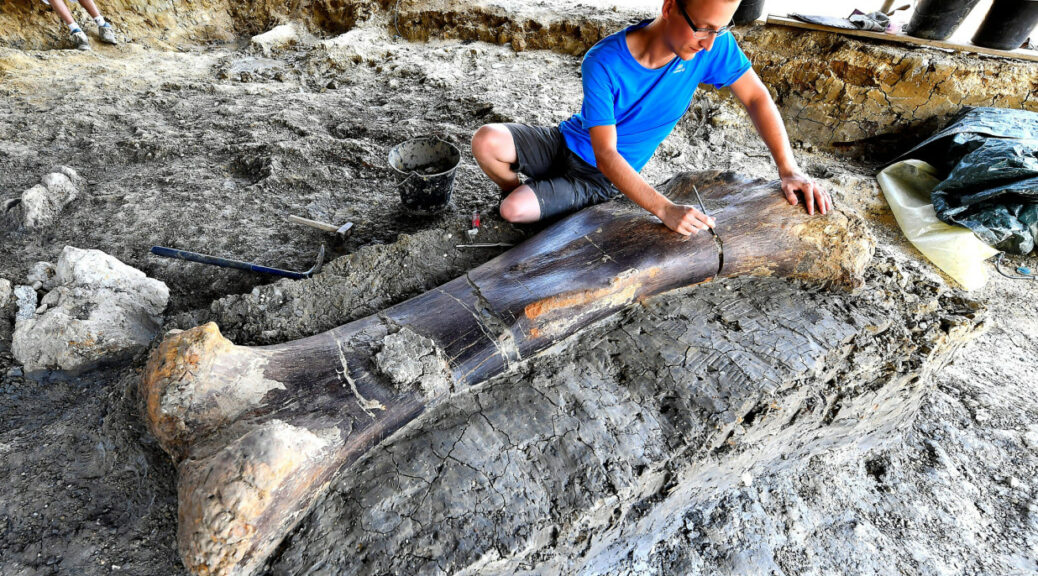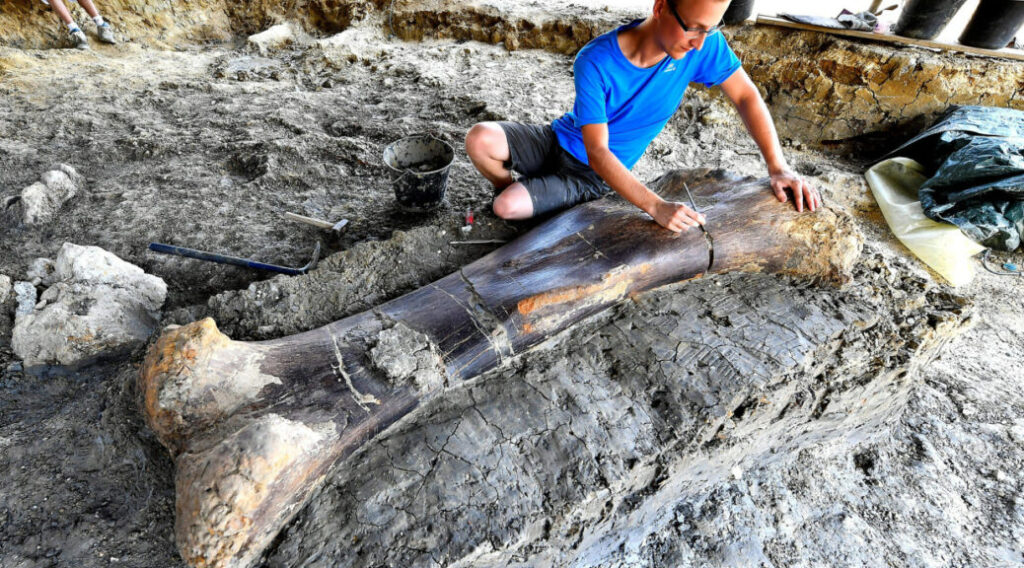Massive, 1,100-Pound Dinosaur Bone Unearthed in France

Massive, 1,100-Pound Dinosaur Bone Unearthed in France
The enormous prehistoric treasures Mother Nature continues to produce, this time in the form of a gigantic thigh bone, once belonging to a massive plant-munching sauropod that roamed the primeval swamps of what is now southwestern France.
A team of paleontologists of the National Museum of Natural History in Paris discovered the huge 6-1/2-foot-long 1,100-pound femur fossil.
Experts consider this 140 million-year-old beefy bone to be a major discovery, and it was found at the fertile paleontological dig site of Angeac-Charente in France. During intense excavation activities.
Uncovered resting in a thick layer of clay, scientists discovered bones from the mammoth creature’s pelvis as well.
Sauropods were plant-eating dinosaurs with small heads, long slender necks, stump-like feet, and elongated tails that are considered some of the biggest land animals to ever stride upon the Earth.
These quadrupedal herbivores flourished during the Late Jurassic period and were the true kings of the prehistoric age, sometimes growing to a length of up to 130-feet long from nose to tail.
The expert team’s awesome French specimen was particularly well-preserved for a fossil of its size and long ago helped support the 50-60 ton weight of this gentle giant.
“We can see the insertions of muscles and tendons, and scars,” Ronan Allain, a paleontologist at the National History Museum of Paris, told Le Parisien newspaper. “This is rare for big pieces which tend to collapse in on themselves and fragment.”

“This femur is huge! And in an exceptional state of conservation. It’s very moving,” says Jean-François Tournepiche, curator at the Museum of Angouleme (Charente).
“This sauropod bone, 2 m high, was found at Angeac-Charente in a 140-million-year-old marsh lost in the Cognac vineyards and now considered one of the largest dinosaur sites in the world.”
Since 2010, more than 70 scientists from around the world gather each summer to search the soil for dino remains in this productive hunting ground.
So far over 7,500 vertebrate bones representing 45 different species have been unburied and identified, including the first sauropodium femur, plants, footprints, stegosaurs, and even a herd of ostrich dinosaurs.